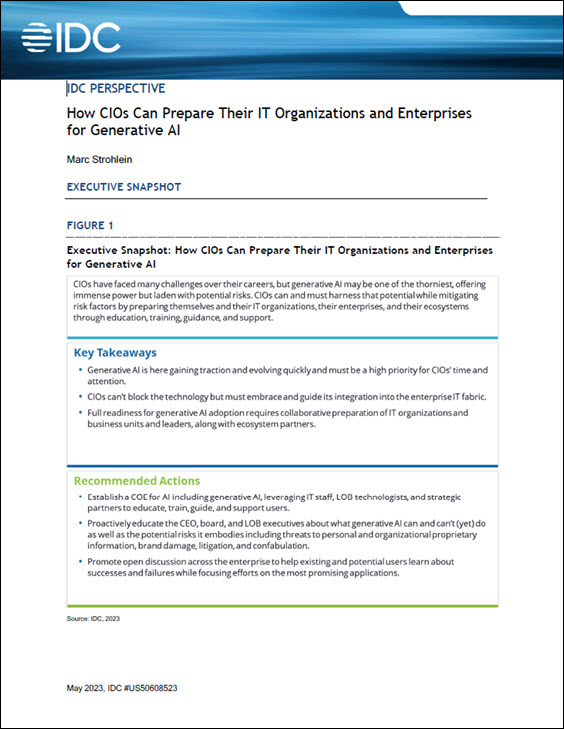How to improve your data for better business insights
Big data has been touted as the answer to many of the questions and problems businesses have encountered for years. Granular touch-points should simplify making predictions, solving problems, and anticipating the big picture down the road. The theory behind data science is a law of large numbers; similar to quantum physics, when we try to predict or analyze data lakes to draw a conclusion, it can only be a probability. Data cannot simply be read, it’s like a code that needs to be cracked.
There’s an incredible amount of insight that can be gleaned from this type of information, including using consumer data to better inform their strategies and bottom lines. But the number of businesses that are actually implementing actionable steps from their data is minimal. So, how can companies ensure that they’re effectively managing the data they’re collecting in order to improve business practices?
Identify What You’re Looking to Learn
Too many companies invest heavily in software and people in a quest for big data and analytics without truly defining the problems that they’re looking to solve. Business leaders expect to instantly throw a wide net over all datasets, but they won’t necessarily get something useful in return.
Take, for example, a doctor that spent over a year and a half implementing a new system that was supposed to give his colleagues meaningful medical insights.
After collecting the data without truly defining the problem they wanted to solve, they ended up with the following insight: “Those who have had cancer have had a cancer test.” This, obviously, is a true statement culled from the data — the problem is it’s useless information.
The theory behind data science was never meant for small data sets, and scaling to do so comes with a host of issues and irregularities; however, more data doesn’t necessarily mean better insights. Knowing what questions to ask is as important for a company as having the best tools for thorough data analysis.
Prepare Your Data to be Functional
They say practice makes perfect, but with data science, practice makes permanent if you’re doing it the wrong way.
The systems that companies use to keep track of data don’t have a lot of validation. Once you start diving into big data for insights, you realize there’s a whole layer of “sanitization” and transformation that needs to happen before you can start running reports and gleaning useful information.
We’ve seen major companies doing data migration, but with an accuracy rate of 53%. Imagine if you went to the doctor mentioned in the previous section and he admitted his recommendations were only 53% correct. We can make a big bet you’re not going to that doctor anymore.
To get quality data, you have to understand what quality data looks like. The human element and the machine have to work together; there needs to be an actionable balance. Data sources are constantly in flux, grabbing from new inputs from the outside world, ensuring a useful level of quality on the data coming in is critical or you’ll get questionable results.
Depend on a Reliable Tech Solution
Once you have a clear path of checks and balances to ensure you’re on the right track, establishing a minimum viable product — potentially with a more efficient outsourced team — is what will truly drive actionable results. It makes sure the assumptions and projections derived from the insights are continually up to date, and looks from different angles to anticipate major trend changes.
It’s important to see the big picture, but also be able to change a model’s behavior if it’s not delivering the most valuable insights. Whatever solution you settle on might not necessarily be the most sophisticated, but as long as it’s providing the answers to the right questions, it will be more impactful than something complex and obscure.
When companies employ tools to untangle their stores of data without having a deep understanding of the limitations of data science, they risk making decisions based on faulty predictions, resulting in detriment to their organization. That means higher costs, incorrect success metrics and errors across marketing initiatives.
Data science is still evolving very quickly. Although we will never get to the point that we can predict everything accurately, we will get a better understanding of problems to provide even more useful insights from data.
About the Author

Luming Wang is CTO, EVP of Software at ElectrifAi. Equal parts visionary technologist and seasoned manager, Luming Wang has spent the last two decades developing groundbreaking data science platforms. As ElectrifAi’s CTO, he ensures underlying technology makes machine learning practical and relevant for enterprise customers. Luming has spent his career on the leading edge of big data and machine learning. As CTO, he leads a team of software engineers and data scientists driven to help customers leverage data to its full potential. From implementing engineering processes to fostering his team’s professional growth, Luming enhances efficiency and productivity at a pivotal time in our company’s trajectory. No matter the business or technology challenge, he leads with a passion for problem-solving.
Sign up for the free insideAI News newsletter.




